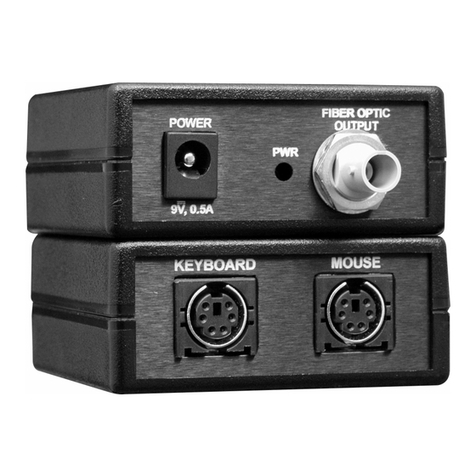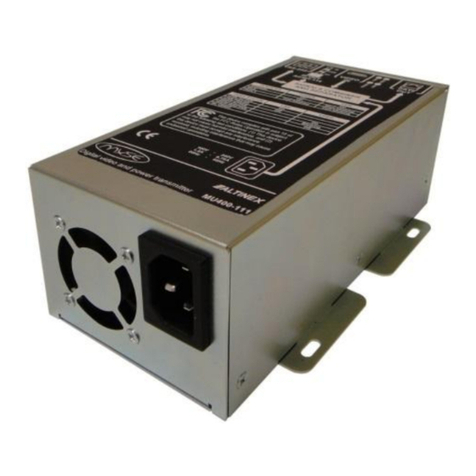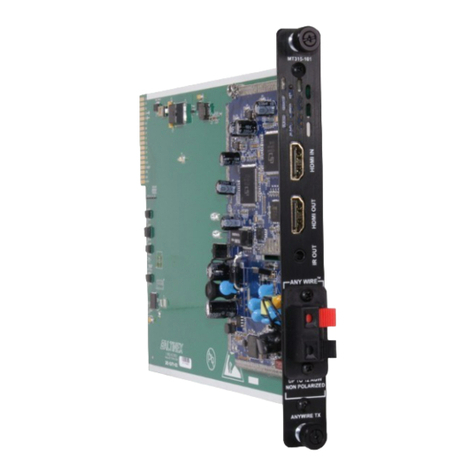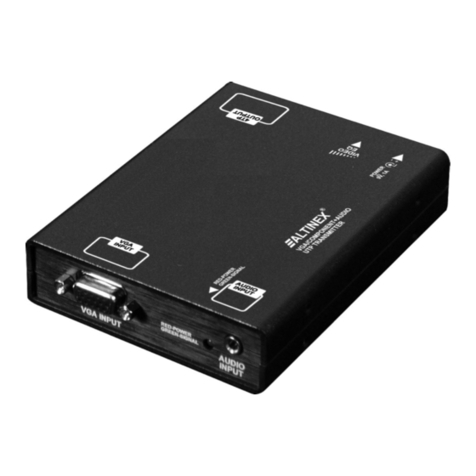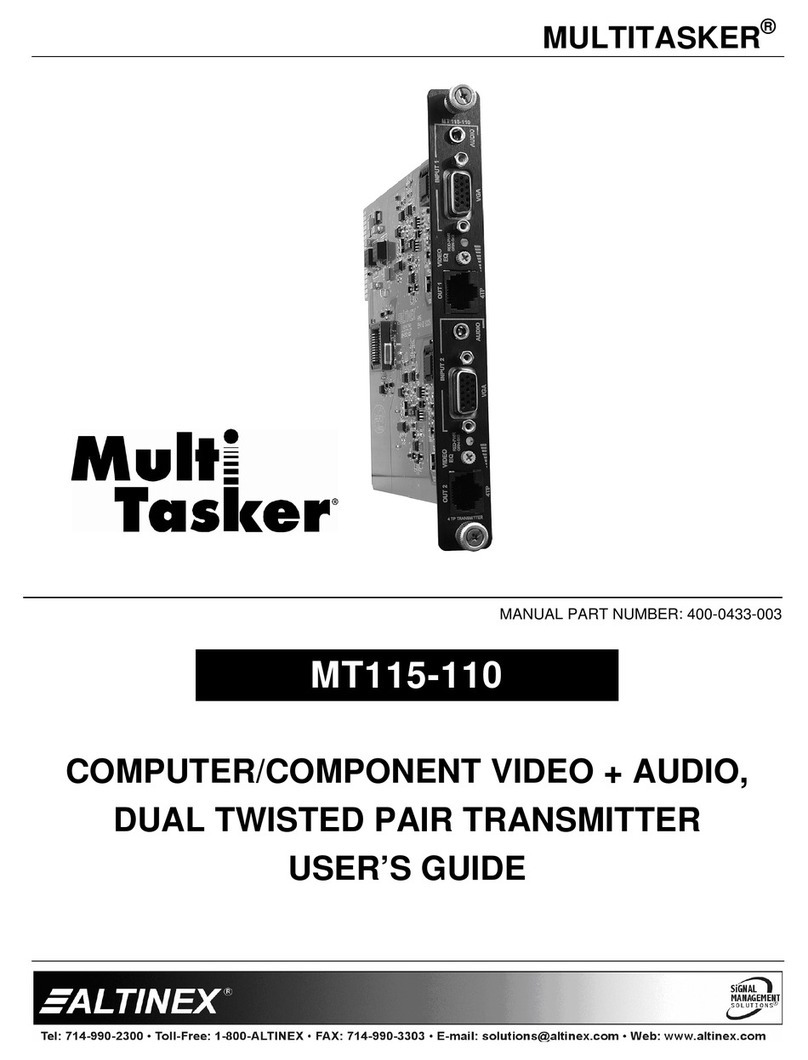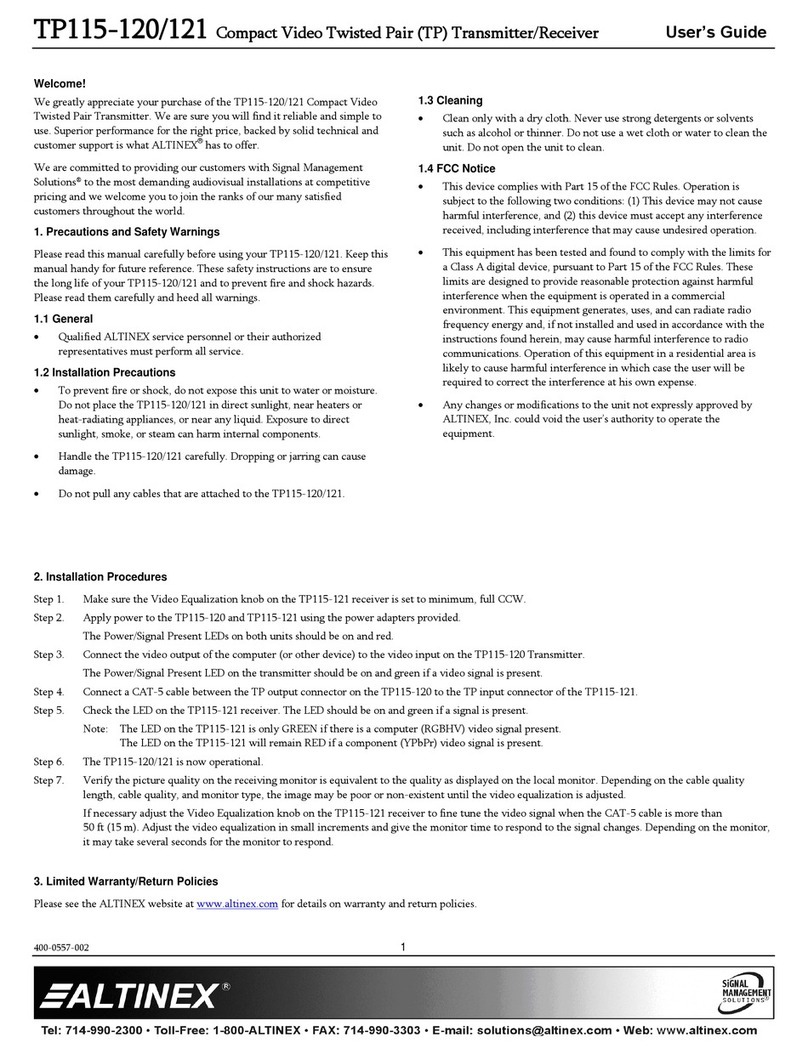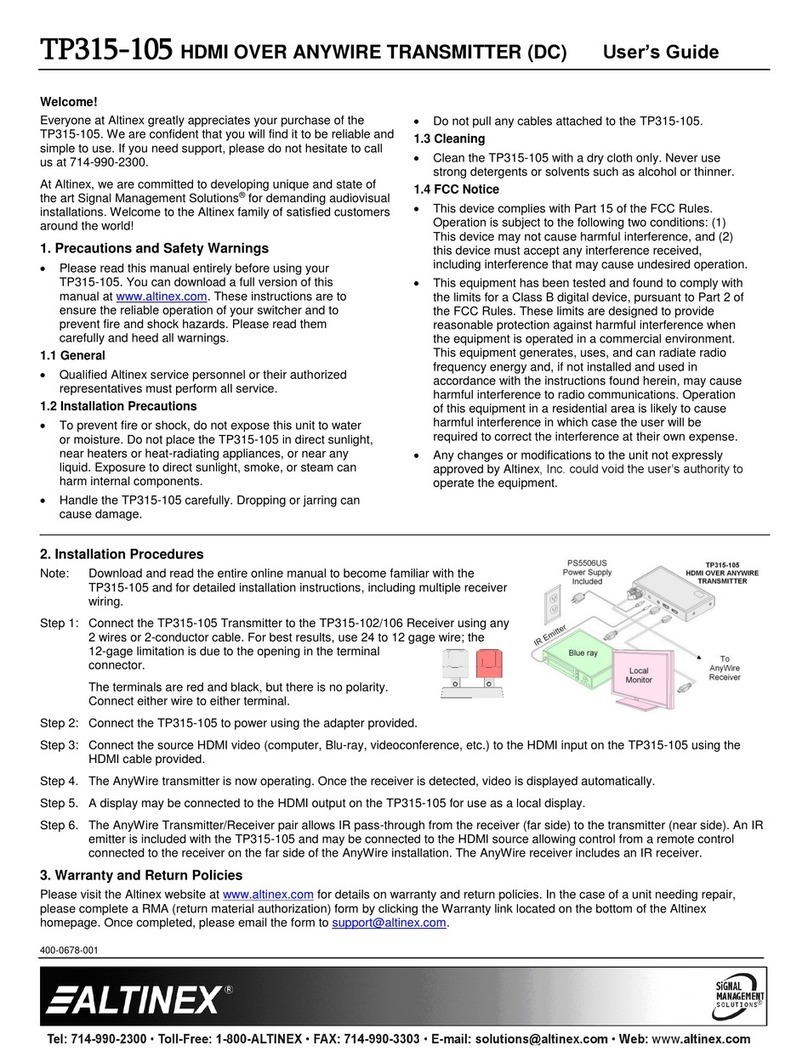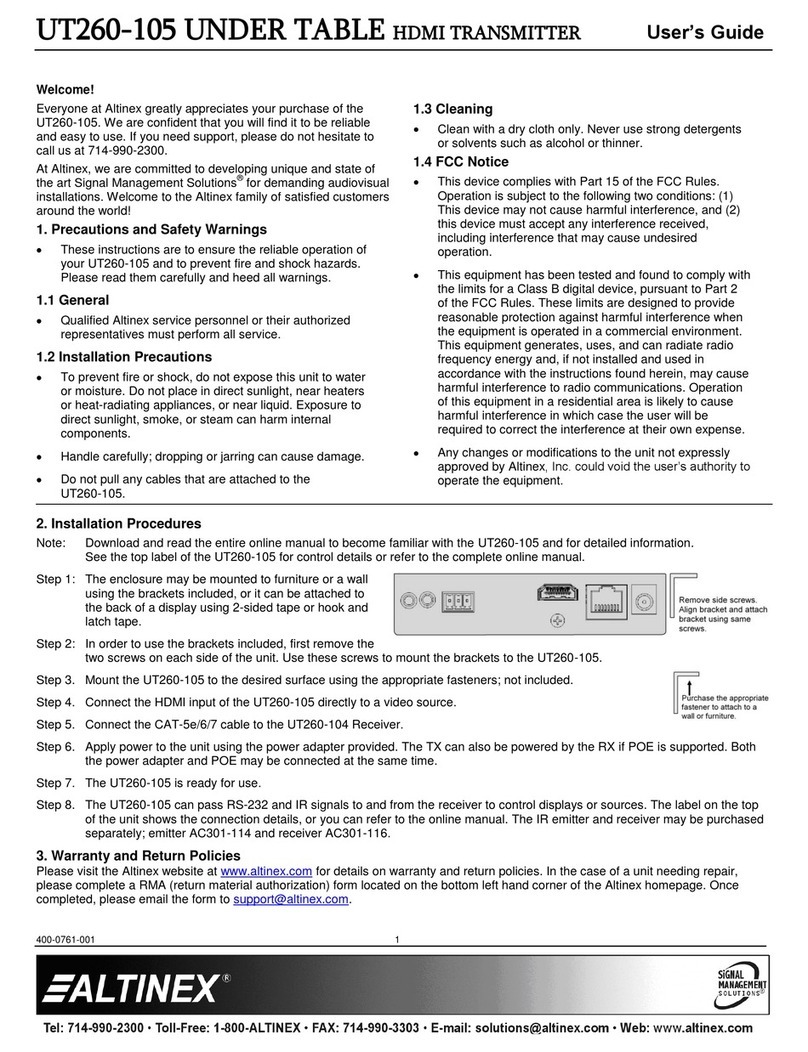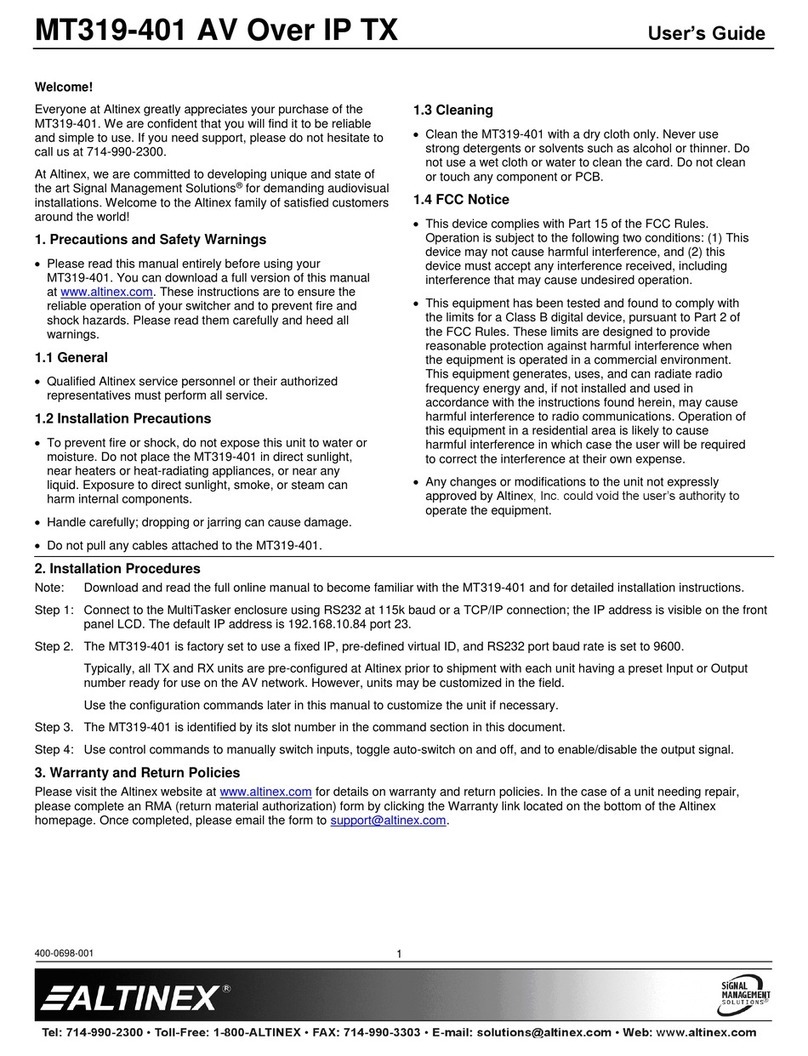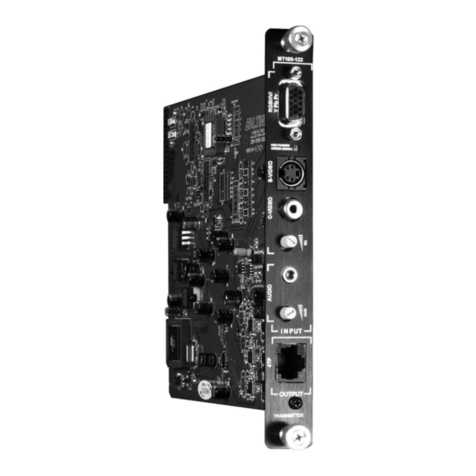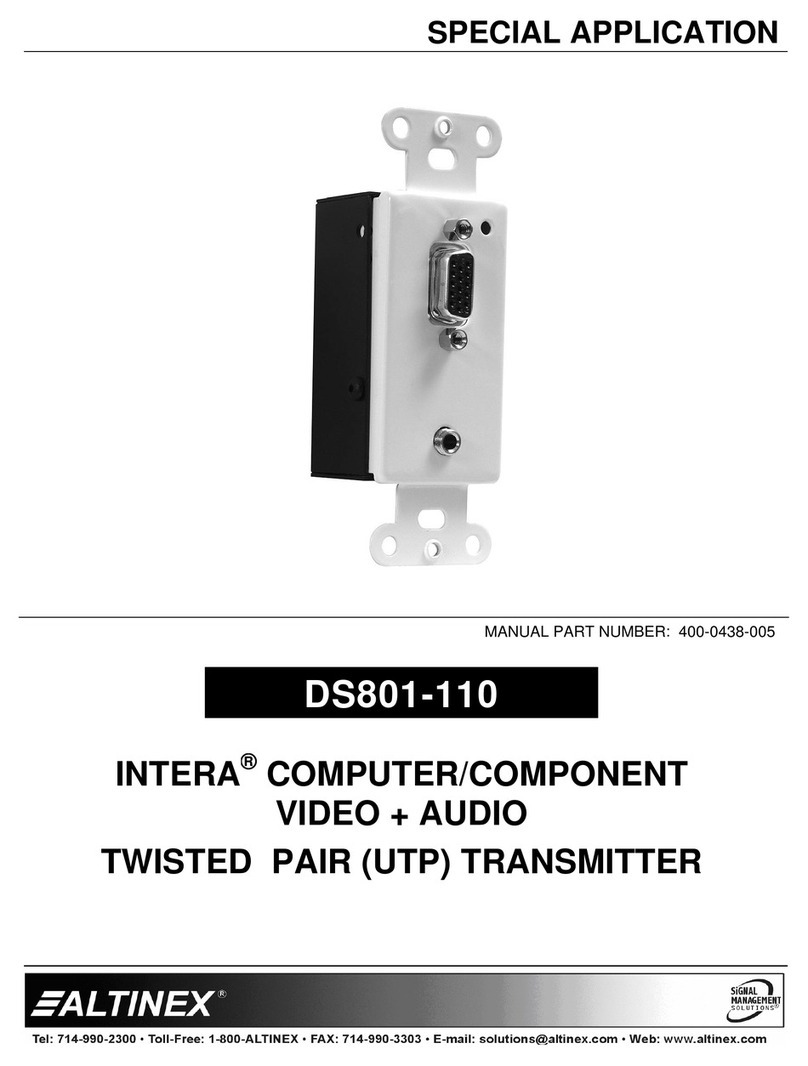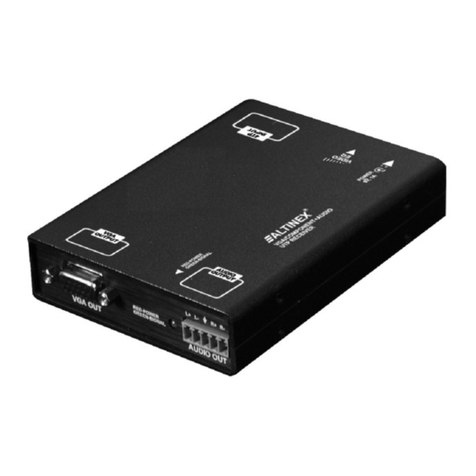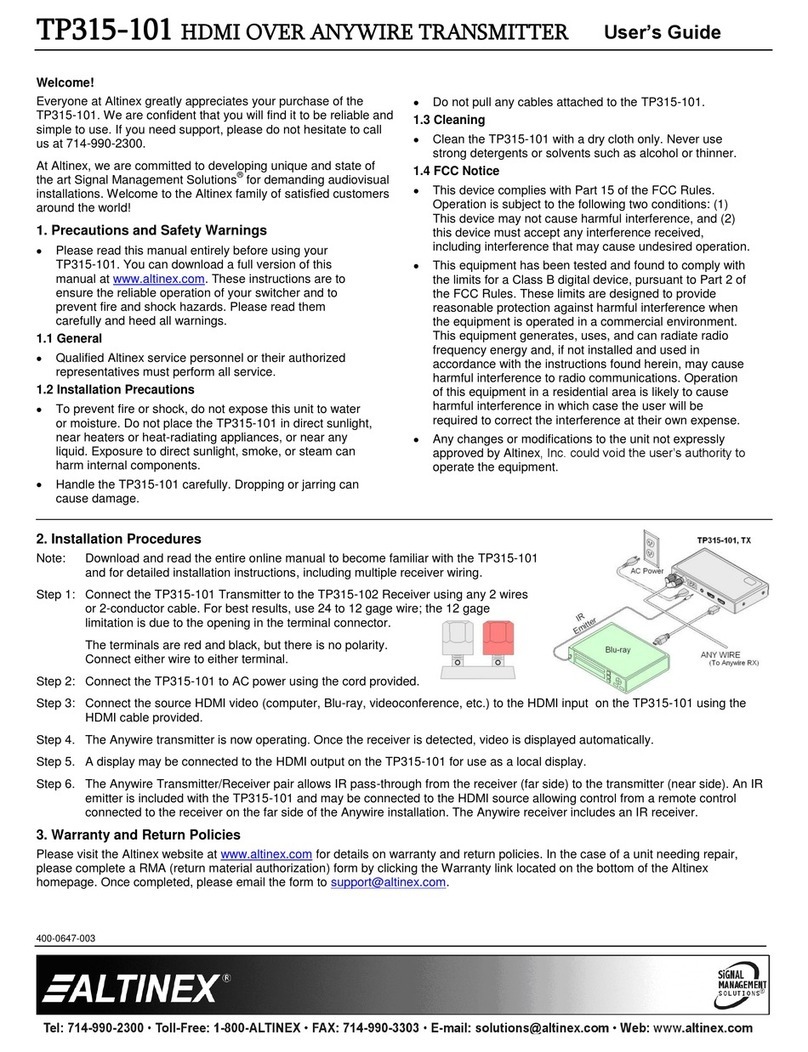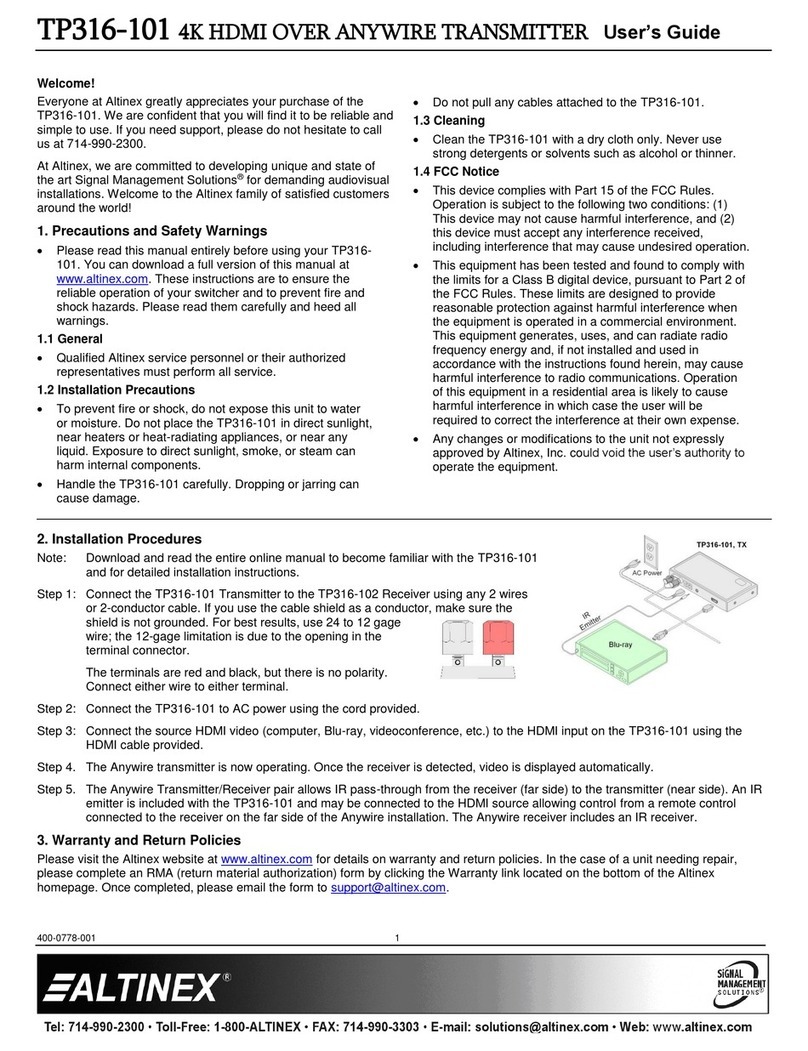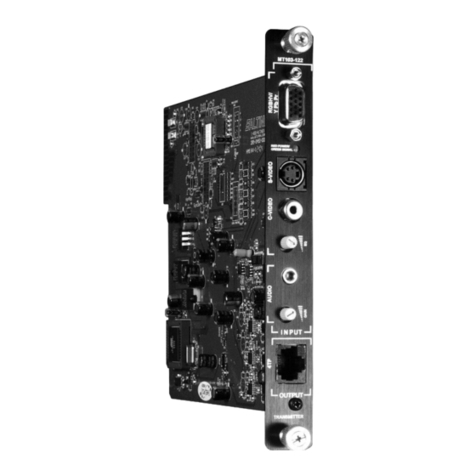RS232 Commands
The RS232 pass-through feature is available with different
baud rates. It is important to make sure that both the
transmitter and receiver are set for the same baud rate.
Not all characters are supported. Following is a list of the valid
RS232 character range:
0x00 0x08 Not valid
0x09 0x7E Valid
17. [MODERS]
Configure the RS-232 port for baud rate. Once configured,
data sent to or received on a given port is in the set format.
This command applies to both ports.
Command Format: [MODERSnbpdsCii]
[MODERSCii]
n RS-232 port number (1 or 2)
Both ports share the same baud rate. Setting one port
sets both ports.
b baud rate (1 ~ 8)
1 = 1200 bps
2 = 2400 bps
3 = 4800 bps
4 = 9600 bps.......(compatible with UT260-104)
5 = 19200 bps.....(compatible with UT260-104)
6 = 38400 bps.....(compatible with UT260-104)
7 = 57600 bps
8 = 115200 bps...(compatible with UT260-104*)
* UT260-103 default baud rate.
p parity for 8-bit/1 stop bit data only
0=none (parity is fixed)
d data bits
0=8 bits (data bits are fixed)
s stop bits
1=1 stop bit (stop bits are fixed)
Example:
Set the RS232 port #1 to 19200 baud by sending:
[MODERS15001C04]
Once complete, the confirmation is returned by the card.
[C04]
Send [MODERSC04] command with no options to receive
the current settings.
[19200,N,8,1C04]
18. [TRRS]
Send a string of data through one of the HDBT Tx ports
and enable the receive option on the same port. The data
sent using this command is output on the RS232 port of the
Rx (UT260-104) connected via the HDBT port.
Use this command when data from the device is expected
by the control application. This command may be used with
the [..S] option to set the startup state of the receive option.
Command Format: [TRRSn=dd…dCii]
[TRRSn=dd…dCiiS] Send & save
n = Port number (1 or 2)
ddd = data to be transmitted (keyboard characters)
Use % for HEX value (ex: %0D=carriage return)
Send no data to simply enable the Rx port. For
example, send [TRRS1=C04] to enable the
receive option on the card port.
Example:
Output “[VER]” on the RS-232 port of the Rx
connected to HDBT port #1 by sending the
following to the controller:
[TRRS1=%5BVER%5DC04]
Feedback from the Rx is received by the
MultiTasker in the form of (RSndd…dC04). See
the (RS) command for details.
19. [TRTX]
Send a string of data through one of the RS232 ports and
disable the receive option on the same port. The data sent
using this command is output on the RS232 port of the Rx
(UT260-104) connected via the HDBT port.
Optimize system performance using this command when
data from the device is not used by the control application.
Excess data from external devices uses card processor
time as well as enclosure bus resources. In severe cases,
overall MultiTasker performance may be affected.
Command Format: [TRTXn=dddCii]
[TRTXn=dd…dCiiS] Send & save
n = Port number (1 or 2)
ddd = data to be transmitted (keyboard characters)
Use % for HEX value (ex: %0D=carriage return)
Send no data to simply disable the Rx port. For
example, send [TRTX1=C04] to disable the
receive option on a card port.
Example:
Output “[VER]” on RS-232 port #1 by sending the
following to the controller:
[TRRS1=%5BVER%5DC04]
Feedback from the Rx is received by the
MultiTasker in the form of (RSndd…dC04). See
the (RS) command for details.
